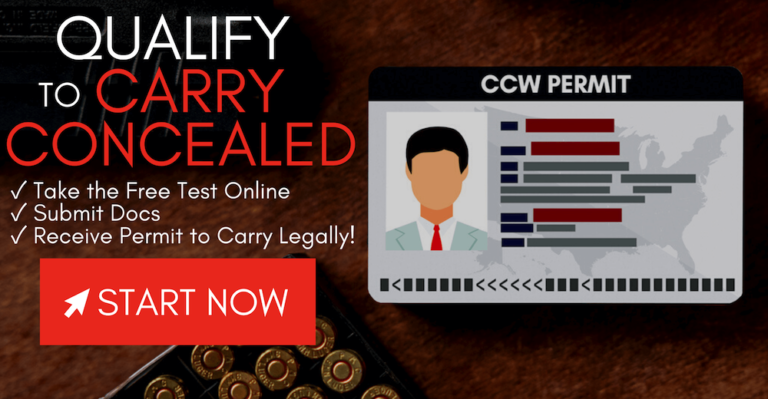Learn the 10 essential gun handling safety rules, including the five gun safety rules and four safety rules for guns. Concealed Coalition teaches responsible firearm ownership and training.
Introduction:
If you own a firearm, safety must come first. Whether you are new to concealed carry or an experienced gun owner, following the core principles of firearm safety keeps you, your family, and your community protected.
The foundation of responsible gun ownership begins with the five gun safety rules, often referred to as the 5 rules of firearms safety. These are universally recognized, easy to remember, and critical to practice at all times. From there, additional safety practices build on those basics.
This guide outlines the 5 firearm safety rules, adds four more rules of gun safety, and concludes with 1 bonus tip. Together, these 10 rules provide a complete framework for safe gun handling in any situation.
Why Are the Rules of Firearm Safety Important?
The Rules of Firearm Safety are the cornerstone of responsible gun ownership. They were created to prevent accidents and improper handling, which can lead to serious consequences.
Following these rules protects not only your safety but also the safety of those around you. These five universal rules apply to all firearms, regardless of make or model. Once you master them, you’ll be able to handle any firearm safely and confidently.
The 5 Rules of Firearm Safety
The 5 rules of gun safety are the cornerstone of firearm education. If you only remember one set of safety guidelines, it should be these.
1. Treat Every Gun as if It’s Loaded
Never assume a firearm is unloaded. Even if you’ve checked it yourself, always handle every gun with the same caution as if it were loaded. This mindset is crucial for eliminating careless mistakes and ensuring everyone’s safety.
2. Keep Your Finger Off the Trigger Until You’re Ready to Shoot
This rule is one of the most important when it comes to preventing accidental discharges. Always keep your finger outside the trigger guard and along the frame of the firearm until your sights are on target, and you are fully ready to fire. This simple habit can save lives and avoid unnecessary accidents.
3. Always Point the Muzzle in a Safe Direction
Arguably the most critical rule of firearm safety, pointing the muzzle in a safe direction ensures that if the gun fires unexpectedly, it won’t cause injury or damage. A “safe direction” changes depending on your surroundings, so always be aware of where your firearm is aimed.
4. Be Sure of Your Target and What’s Beyond It
Before pulling the trigger, make sure you know exactly what you’re shooting at and what lies beyond your target. Bullets can travel through targets and hit unintended objects or people. This is why awareness of your surroundings is essential and why this rule is often emphasized in firearm training.
5. Know How to Safely Operate Your Firearm
Each firearm is unique, with its own safety mechanisms and operational features. Before using any gun, take the time to fully understand how it works. Read the manual, learn about its safety features, and practice handling it safely with an unloaded weapon. Familiarity with your firearm is key to safe operation.
5 Additional Gun Safety Rules
While the 5 rules of gun safety cover the basics, adding these practices ensures a well-rounded approach.
6. Store Firearms and Ammunition Securely
Safe storage is absolutely essential for firearm safety. Guns should always be locked in a secure safe or fitted with a gun lock to prevent unauthorized access. Additionally, store ammunition separately in a locked container to add an extra layer of security. Proper storage saves lives and prevents accidents.
7. Wear Proper Eye and Ear Protection
Firearms generate loud noises that can permanently damage your hearing and produce flying debris that can harm your eyes. Whether you’re at the shooting range or hunting, always wear high-quality eye and ear protection. It’s a simple yet crucial step to keep yourself safe.
8. Never Rely Solely on a Gun’s Safety Mechanism
Mechanical safeties are helpful, but they can fail. Treat every firearm as if it could discharge at any moment, even with the safety engaged. Following all other safety rules ensures a greater margin of error and prevents accidents caused by over-reliance on mechanical features.
9. Avoid Alcohol, Drugs, or Fatigue When Handling Firearms
Handling firearms requires full attention and a clear mind. Never handle a gun while under the influence of alcohol or drugs, or when you’re overly tired. Poor judgment and slow reaction times can lead to dangerous mistakes. Stay alert—your focus is critical to safety.
10. Seek Continuous Training and Practice Regularly
Firearm safety is not a one-time lesson. Enroll in training courses, attend refresher classes, and practice at the range often. Concealed Coalition offers both in-person and online training resources to keep your skills sharp.
Firearm Safety for Beginners: A Simple Checklist
If you’re new to firearms, use this safety checklist to develop good habits:
- Always verify that the gun is unloaded before handling it.
- Keep your finger off the trigger until you’re ready to shoot.
- Learn the proper steps to load and unload your firearm safely.
- Start training with an unloaded firearm to build confidence.
- Store your firearm securely as soon as you purchase it.
Firearm Safety Rules for Children
Gun safety isn’t just for adults. If you have children at home, it’s essential they understand basic firearm safety. Key tips include:
- Teach children never to touch a firearm without adult supervision.
- If they see an unsecured gun, they should leave the area immediately and inform an adult.
- Use age-appropriate language to explain why guns must always be handled carefully.
For more resources, visit Less Shots Fired, a program dedicated to teaching firearm safety to children.
Training and Resources with Concealed Coalition
Concealed Coalition doesn’t just teach the four rules of gun safety—we provide the tools to make firearm safety part of your everyday life:
- Permit Training and Certification Courses: Find a class near you
- Concealed Coalition University: Access hours of online safety and self-defense training
- YouTube Channel: Watch free tutorials and videos
- Legal Protection Plans: Monthly or annual memberships through Firearms Legal Protection
- State-by-State Guides: Clear next steps after completing your training
- 10% Off Storewide: Shop safety gear and accessories to support responsible carrying
FAQs About Gun Handling Safety Rules
What are the 5 rules of firearms safety?
The five rules are: treat all guns as loaded, keep your finger off the trigger until ready to shoot, always point in a safe direction, know your target and beyond, and know how to operate your firearm safely.
Why is practice considered part of the 5 rules of gun safety?
While not one of the core five, practice ensures your reflexes and handling remain sharp, reducing the risk of mistakes.
Where can I find firearm safety training near me?
Concealed Coalition offers both in-person and online training nationwide.
Conclusion
Firearm safety is a lifelong responsibility. By following the 5 rules of firearms safety, adding four additional precautions, and committing to ongoing training, you create a strong safety foundation.
Whether you are a beginner learning the five gun safety rules or an experienced concealed carry member looking to refresh your skills, Concealed Coalition has the tools, training, and community to help you carry responsibly.
Start your training today with Concealed Coalition Classes and make firearm safety part of your daily life.




